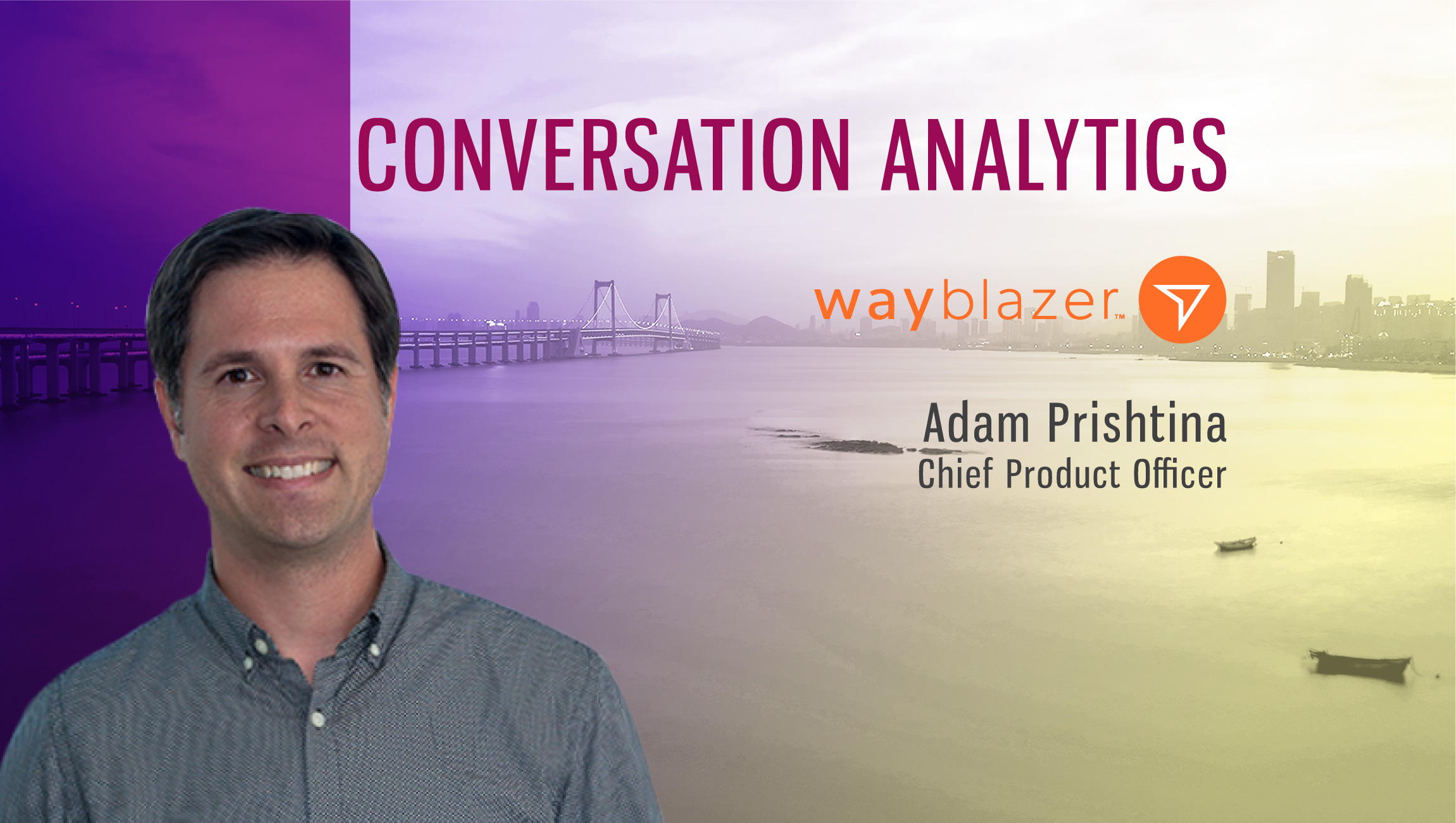Adam Prishtina
Chief Product Officer, WayBlazer
If you are online, you are most likely to read as many recommendations as possible before making a purchase decision. One negative or not-so-good recommendation could overshadow all other positive ones. So, how do marketers stay on top of their recommendations engine? In a purchasing journey, shoppers are most likely to read every recommendation that is backed by the most relevant media and reviews. WayBlazer makes this journey fully-automated and driven by AI. Adam Prishtina, Chief Product Officer at WayBlazer, chats about the role of AI and other automated technologies in the travel industry, and in martech.
Html code here! Replace this with any non empty text and that's it.
Tell us about your role at WayBlazer and the team/technology you handle.
As WayBlazer’s chief product officer, I am committed to helping brands improve the end-to-end travel journey through our AI-powered recommendation engine. Given the ongoing advancements in AI technology and digital advertising, I am excited to support WayBlazer in carrying out its mission to help brands improve their travel experience. One of my immediate priorities is to expand our delivery channels to Facebook Messenger, and we’re also building on the recent success of WayBlazer’s first-to-market chatbot ad unit.
What is the ‘State of Behavioral Marketing” platforms in 2018?
Today’s consumers are savvier than ever and expect a certain level of personalization when shopping. In fact, 87 percent of consumers are now willing to give up their personal information to brands if it means getting a better experience. For this reason, many companies are adopting more personalized tools and strategies that allow them to offer experiences that are tailored to consumers down to the individual level.
For example, at WayBlazer, we recently launched a chatbot-powered ad unit that helps customers find and book travel through display ads. Our technology has the ability to understand user intent and context and offers them the most relevant travel recommendations.
Define Travel Intelligence from a modern CPO’s perspective? How do you differentiate travel intelligence from audience targeting technologies?
Travel intelligence technology takes the overall travel shopping journey to the next level. While audience targeting is a great initial step toward offering personalized recommendations and experiences, the level of personalization is limited by what marketers manually add on their own. On the other hand, travel intelligence understands context and offers more personalized recommendations based on user input in real-time.
What analytics and metrics do you provide to your customers?
The WayBlazer platform drives engagement and conversion. We track a wide variety of metrics which includes the basics such as users, active users, sessions, interaction rate and hotel booking rate.
But in order to truly understand engagement, we go a level deeper. We analyze query length to determine how much trip intent we’re gathering in each session. We know the percentage of queries that include “soft” concepts, e.g. “romantic” or “kid friendly”, as opposed to “hard” concepts, e.g. “spa” or “beach”. We also know how often travelers search using points of interest or hotel amenities, for example. These insights not only help our customers better understand their customers, they help WayBlazer continue to evolve the platform.
Today, each brand receives a custom report on a regular basis. In the future, we’ll be empowering them with a self-service, real-time dashboard.
Would you tell us more about the WayBlazer Travel Graph and how it delivers relevant recommendations?
The WayBlazer Travel Graph is large and comprised of millions of hotels, vacation rentals, reviews and images. This data plays a key role in us understanding each property in a unique way. Our technology processes these sources to deliver a result personalized to each individual traveler.
How do you leverage AI/ML to provide better context for recommendations?
WayBlazer leverages NLP and machine learning to understand concepts rather than just keywords.
For example, we use Convolutional Neural Networks for image recognition. Not only do we identify objects within the images provided by the brand – a private beach, a pool, etc. – we extract concepts from those images in order to help us understand what makes the hotel truly special. We also use a proprietary algorithm to determine how aesthetically pleasing each hotel image is – a powerful tool for merchandising.
How have tools and technologies to measure customer journey analytics evolved with new-age AI/ML algorithms?
The power of machine learning comes from predicting outcomes based on historical data. With the right amount of training data, ML can help brands determine the best products to promote to each unique visitor when to promote them, and the best channels to use. And by using reinforcement learning, the algorithm gets even better over time.
Thanks for chatting with us, Adam.
Stay tuned for more insights on marketing technologies. To participate in our Tech Bytes program, email us at news@martechseries-67ee47.ingress-bonde.easywp.com











